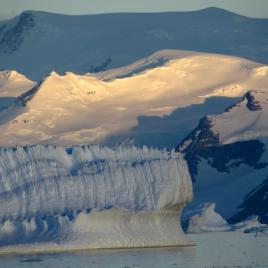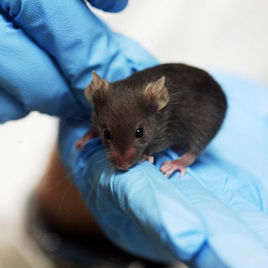Proceedings of the Royal Society B: Biological Sciences Researchers show that across 20 cities, towns and villages in southern Canada, common white clover repeatedly adapts to city environments by evolving to have less toxic defences. The results show adaptation to cities may be common, and this evolutionary change may have important consequences for maintaining healthy […]
Category: Paper of Interest
Proteins in ancient tooth plaque reveal long-ago diets 
Proceedings of the Royal Society B: Biological Sciences Researchers found a new way to identify ancient diet from proteins preserved in ancient people’s teeth. After extracting proteins from 100 plaque samples from teeth ranging in age from the Iron Age to the Post-Medieval period in Britain, the researchers found the plaque contained proteins from cereals, […]
Reproductive strategies linked to disease resistance in white-throated sparrows 
Disease resistance often comes at a cost to other functions, meaning that even within the same species, immune activity can differ between the sexes or even between different life-history strategies within a sex. White-throated sparrows are unusual in having two colour morphs, white and tan. Within each sex, white birds are more aggressive and tan […]
Universal free fall leaves Einstein’s theory standing 
The principle that all objects accelerate identically, regardless of their own gravity, when falling in an external gravitational field has passed the most stringent test to date. Scientists observed the motions of a binary star system containing a neutron star closely orbited by a white dwarf, which are, in turn, both orbited by another, distant […]
HPV testing detects cervical pre-cancer earlier, more accurately than Pap smear 
Nearly all cervical cancers are associated with persistent cervical infection from cancer-related human papillomavirus (HPV) strains. Results from a randomized clinical trial of about 19,000 women that compared primary HPV testing alone versus Pap test for cervical screening show that primary HPV testing detects precancerous lesions earlier and more accurately than the Pap test. Moreover, […]
Antidepressants may increase risk of death for those with progressive lung disease 
Antidepressant use in people with chronic obstructive pulmonary disease (COPD) is associated with a 20 per cent increase in likelihood of death and a 15 per cent increase in likelihood of hospitalization due to related symptoms. This study suggests a strong association exists between, new users of serotonergic antidepressants among adults with COPD and higher […]
Who takes the most risks, and when? 
A new mathematical model shows organisms in good condition take the most risks when their condition gives them higher probabilities of success, higher gains from success, or higher buffering against failure. Conversely, organisms in poor condition take the most risks when poor condition causes desperation. Under specific conditions, the riskiest individuals are those in intermediate […]
A new terrestrial palaeo-environmental record from the Bering Land Bridge 
The timing of the earliest unequivocal human dispersals into Alaska over the Bering Land Bridge corresponds with a shift to warmer and wetter conditions in the region between ~14,700 and ~13,500 years ago. Researchers reconstructed the terrestrial climate from the last glacial maximum, about 21,500 years ago, to the present from the Bering Land Bridge’s […]
Iconic Burgess Shale creature reconstructed 
Waptia fieldensis Walcott, 1912 is an iconic animal from the middle Cambrian Burgess Shale biota in British Columbia that had lacked a formal description since its discovery at the beginning of the 20th century. Drawing on some 1,800 specimens, researchers three-dimensionally reconstructed the ~508-million-year-old animal’s functional anatomy. The shrimp-like animal’s compound eyes, antennae, mandibles, and […]
Painted Lady butterflies survive round-trip across the Sahara
Researchers demonstrate that the Painted Lady butterfly (Vanessa cardui) crosses the Sahara Desert and the Mediterranean twice, travelling south to the sub-Sahara in the fall, then reversing the journey the following spring. The Palearctic–African migratory circuit is similar to that of migratory birds. However, the Painted Lady butterfly, which needs both temperate and tropical habitats to […]
Coral coastal defence compromised by climate change 
Nature Published June 13, 2018 (News release from Nature Research Press) The current growth rate of coral reefs in the tropical western Atlantic and Indian Ocean is almost keeping pace with projected sea-level rise, but as coral reefs protect tropical and subtropical shorelines around the globe, small island nations may lose a key contributor to coastal protection against flooding […]

Three trillion tonnes of ice lost from Antarctica since 1992 
The Antarctic Ice Sheet lost about 3 trillion tonnes of ice between 1992 and 2017. This figure corresponds to a mean sea-level rise of about 8 millimetres. Antarctica’s ice sheets, which contain enough water to raise global sea level by 58 metres, are a key indicator of climate change and driver of sea-level rise. Nature […]

Urban rat races: how cities affect rat genetics and diversity 
Scientists examined rat populations in four cities to assess population-genetic structure, diversity patterns, and dispersal dynamics. Landscape features consistently coincided with genetic breaks, genetic diversity consistently varied within cities—suggesting different population dynamics—and local dispersal dynamics revealed similar trends. Major roads genetically isolate rat populations in Vancouver and Salvador, whereas resource deserts and waterways force genetic […]

Baby formula changes gut bacteria and increases overweight risk 
Breastfeeding for longer may change a baby’s gut bacteria to protect them from becoming overweight, according to a Canadian child-health longitudinal study. Researchers found that babies who were fed only formula were three times as likely to be overweight compared with their breastfed peers. The formula-fed babies also had more diverse gut bacteria—this could be […]
Size-restricted fishing shapes age-related codfish habitat 
Researchers used population dynamics modeling to assess the effects of size-specific and age-specific harvesting of Atlantic cod on Canada’s eastern Scotian Shelf. They found that fishing to a depth of 80 metres accounted for 72 per cent of the observed age-related cod-habitat deepening, and increasing fishing depth to 120 metre accounted for all of the […]
Loss of marine-food availability forces Andean condor to fly further for food; other scavengers likely also affected 
As numbers of marine mammals have decreased and human use of coastlines has increased, the Andean condor diet has changed to include one-third to one-half less marine-derived food than a century ago. This influences their movement patterns, with some birds foraging up to 86 km from near-coast nesting sites and over a mountain range to find […]